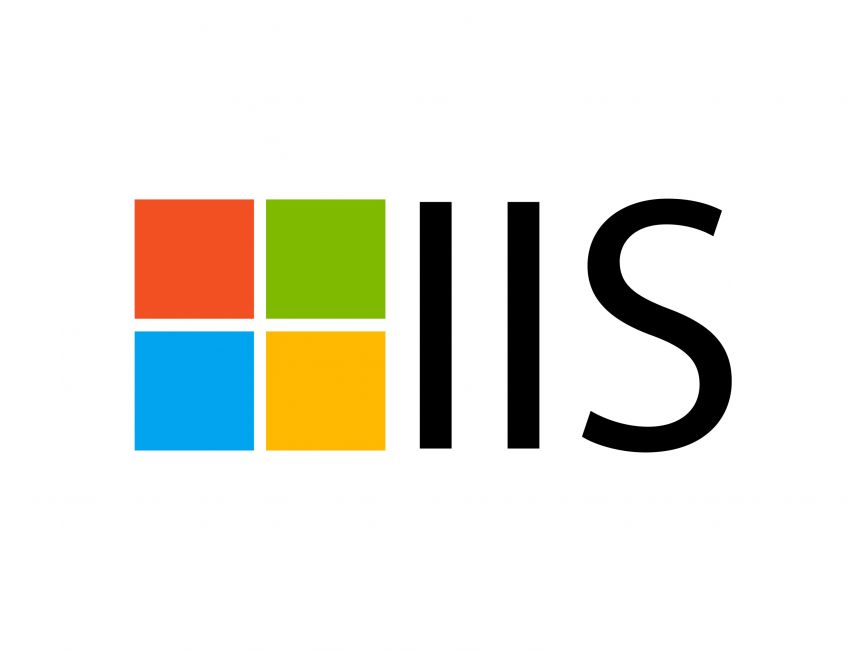Enable Gzip and Brotli compression to improve website performance. The configuration steps are as follows: 1. Enable static and dynamic content compression in IIS; 2. Modify the web.config file to enable Gzip compression and adjust dynamic compression settings; 3. Download and install the Brotli module and configure the relevant MIME types; 4. Use the browser developer tools to verify whether Content-Encoding is effective; 5. Pay attention to issues such as MIME type coverage, cache impact, HTTPS compatibility, and server resource occupancy. After correct configuration, it can effectively reduce the amount of data transmitted and speed up page loading.

Enabling Gzip and Brotli compression can significantly reduce the amount of data transferred by the website, thus speeding up page loading. Configuring these two compression methods in IIS (Internet Information Services) is not complicated, but you need to pay attention to some details, otherwise the expected results may not be achieved.

Configure Gzip compression
IIS comes with support for Gzip compression, just need to be enabled and configured correctly.

Enable static and dynamic content compression
Open Server Manager → Add Roles and Features → Ensure that "Static Content Compression" and "Dynamic Content Compression" are checked in "Performance" under "Web Server (IIS).".-
Modify the web.config file
Add the following configuration to theweb.configfile in the root directory of your website:
<configuration>
<system.webServer>
<urlCompression doStaticCompression="true" doDynamicCompression="true" />
</system.webServer>
</configuration>- Note : Dynamic compression only compresses smaller responses (such as JSON) by default. If you want to compress larger responses, you need to adjust
dynamicCompressionBeforeCachesettings.
Enable Brotli compression
Brotli is a more efficient compression algorithm than Gzip. IIS does not support it by default and requires manual installation of modules.
Download and install Brotli module
The URL Rewrite and Dynamic Content Compression modules for IIS can be downloaded from Microsoft, or a third-party implementation using the IIS Compression Tool .Configure Brotli compression
After the installation is complete, add the following content toweb.config:
<configuration>
<system.webServer>
<urlCompression doStaticCompression="true" doDynamicCompression="true" dynamicCompressionBeforeCache="true">
<staticTypes>
<add mimeType="text/*" enabled="true" />
<add mimeType="application/javascript" enabled="true" />
<add mimeType="application/json" enabled="true" />
<add mimeType="*/*" enabled="false" />
</staticTypes>
<dynamicTypes>
<add mimeType="text/*" enabled="true" />
<add mimeType="application/json" enabled="true" />
<add mimeType="*/*" enabled="false" />
</dynamicTypes>
</urlCompression>
</system.webServer>
</configuration>- Verify whether it is effective
Use the browser developer tool to view theContent-Encodingfield in the network request header. If it is displayed asbrorgzip, compression is enabled.
Notes and FAQs
Some settings are easily overlooked, causing compression to not work as expected:
MIME type not included
If some file types are not added to thestaticTypesordynamicTypeslist, they will not be compressed by default.Cache affects test results
The browser or CDN cache may return old data, and it is recommended to disable cache or clear it before testing.HTTPS has no effect on compression
Many people mistakenly believe that compression under HTTPS will fail. In fact, as long as the configuration is correct, encryption or not will not affect the compression logic.Server resource occupation
Dynamic compression will increase CPU usage, especially in high concurrency scenarios. It is recommended to choose whether to turn on based on the actual load.
Basically that's it. Both Gzip and Brotli can effectively improve website performance, and there is almost no additional maintenance required after reasonable configuration, but make sure that every step is checked in place when setting it up for the first time.
The above is the detailed content of Enabling Gzip and Brotli Compression in IIS. For more information, please follow other related articles on the PHP Chinese website!

Hot AI Tools

Undress AI Tool
Undress images for free

Undresser.AI Undress
AI-powered app for creating realistic nude photos

AI Clothes Remover
Online AI tool for removing clothes from photos.

Clothoff.io
AI clothes remover

Video Face Swap
Swap faces in any video effortlessly with our completely free AI face swap tool!

Hot Article

Hot Tools

Notepad++7.3.1
Easy-to-use and free code editor

SublimeText3 Chinese version
Chinese version, very easy to use

Zend Studio 13.0.1
Powerful PHP integrated development environment

Dreamweaver CS6
Visual web development tools

SublimeText3 Mac version
God-level code editing software (SublimeText3)
 How to generate URL from html file
Apr 21, 2024 pm 12:57 PM
How to generate URL from html file
Apr 21, 2024 pm 12:57 PM
Converting an HTML file to a URL requires a web server, which involves the following steps: Obtain a web server. Set up a web server. Upload HTML file. Create a domain name. Route the request.
 How to open iis application pool
Apr 09, 2024 pm 07:48 PM
How to open iis application pool
Apr 09, 2024 pm 07:48 PM
To open an application pool in IIS: 1. Open IIS Manager; 2. Navigate to the "Application Pools" node; 3. Right-click the target application pool and select "Manage"; 4. Click "Advanced Settings" Tab; 5. Application pool configuration can be viewed and modified here.
 7-zip maximum compression rate setting, how to compress 7zip to the minimum
Jun 18, 2024 pm 06:12 PM
7-zip maximum compression rate setting, how to compress 7zip to the minimum
Jun 18, 2024 pm 06:12 PM
I found that the compressed package downloaded from a download website will be larger than the original compressed package after decompression. The difference is tens of Kb for a small one and several dozen Mb for a large one. If it is uploaded to a cloud disk or paid space, it does not matter if the file is small. , if there are many files, the storage cost will be greatly increased. I studied it specifically and can learn from it if necessary. Compression level: 9-Extreme compression Dictionary size: 256 or 384, the more compressed the dictionary, the slower it is. The compression rate difference is larger before 256MB, and there is no difference in compression rate after 384MB. Word size: maximum 273 Parameters: f=BCJ2, test and add parameter compression rate will be higher
 How to set up iis application pool
Apr 09, 2024 pm 07:51 PM
How to set up iis application pool
Apr 09, 2024 pm 07:51 PM
The IIS Application Pool Setup Guide provides detailed instructions for configuring application pools directly in IIS Manager: application name, mode, launch type managed mode, authentication, loading user profile 32-bit application enablement, recycling frequency and reason Application path, hosting mode, initial memory allocation virtual directory, initialization module, fault isolation mode
 AI helps brain-computer interface research, New York University's breakthrough neural speech decoding technology, published in Nature sub-journal
Apr 17, 2024 am 08:40 AM
AI helps brain-computer interface research, New York University's breakthrough neural speech decoding technology, published in Nature sub-journal
Apr 17, 2024 am 08:40 AM
Author | Editor Chen Xupeng | ScienceAI Aphasia due to defects in the nervous system can lead to serious life disabilities, and it may limit people's professional and social lives. In recent years, the rapid development of deep learning and brain-computer interface (BCI) technology has provided the feasibility of developing neurospeech prostheses that can help aphasic people communicate. However, speech decoding of neural signals faces challenges. Recently, researchers from VideoLab and FlinkerLab at the University of Jordan have developed a new type of differentiable speech synthesizer that can use a lightweight convolutional neural network to encode speech into a series of interpretable speech parameters (such as pitch, loudness, formant frequency, etc.), and synthesize these parameters into speech through a differentiable neural network. this synthesizer
 where is the iis log
Apr 09, 2024 pm 07:57 PM
where is the iis log
Apr 09, 2024 pm 07:57 PM
IIS logs are typically stored in the following locations: Windows Server 2008 and above: %SystemDrive%\inetpub\logs\LogFilesWindows Server 2003: %SystemDrive%\Documents and Settings\All Users\Application Data\Microsoft\IIS\LogFiles
 How to open xml format
Apr 02, 2025 pm 09:00 PM
How to open xml format
Apr 02, 2025 pm 09:00 PM
Use most text editors to open XML files; if you need a more intuitive tree display, you can use an XML editor, such as Oxygen XML Editor or XMLSpy; if you process XML data in a program, you need to use a programming language (such as Python) and XML libraries (such as xml.etree.ElementTree) to parse.
 Detailed explanation of C++ function naming: Questions and answers on following specifications and improving readability
May 01, 2024 pm 02:30 PM
Detailed explanation of C++ function naming: Questions and answers on following specifications and improving readability
May 01, 2024 pm 02:30 PM
C++ function naming convention follows camel case naming or Pascal naming. It is recommended to use descriptive, concise function names that avoid abbreviations and special characters. Overloaded functions can be distinguished by differentiating parameters, using suffixes, or namespaces. Function naming conventions that have single-letter names, are ambiguous, are overly specific, or contain special characters should be avoided.







